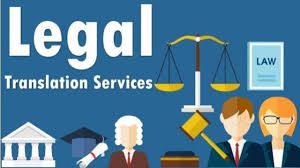If the word “law” sounds a bit rigorous, the word “legal translation” sounds more than rigorous. Legal translation is a high-end service in translation. It mainly serves lawyers, foreign-funded enterprises, import and export companies and other social upper-class groups. The quality requirements and technical difficulties are quite high. As one of the main research contents of forensic linguistics, including interpretation and translation, it will play an increasingly important role in domestic and international social life. In addition to higher requirements for translators and related conditions, legal translation is also subject to the characteristics of legal language itself. Here we discuss legal translation methods and how profi juristische Übersetzer Profi Fachübersetzung gives their services in legal translation. Professional translation agency is considered one of the best for legal translation . Now I will discuss the process of legal translation.
1. VOCABULARY FOR LEGAL TRANSLATION
As far as legal translation is concerned, we can divide vocabulary into two categories, professional terms and non-professional terms.
Professional terminology spells professional skills and is the core of the professionalism of legal translation. This is not only the case for legal translation, but the professionalism of the entire legal industry depends on terminology and logic. You don’t have to be a law major, you don’t have to have a lawyer’s certificate, but a little bit of common sense is necessary. You do not need to understand the legal logic, but the understanding of each professional vocabulary must not be biased.
For non-professional vocabulary, most spelling is the sense of language. For example, ‘take further steps” can be said to be “take further steps”, but which is more common and smooth than “take further steps”? The improvement of language sense cannot be solved by looking at the legal translation tutorial. It is not only a long process, but also comes from all aspects of life, even from content that has nothing to do with legal translation. It requires long-term accumulation and awareness of language.
2.PHRASE COLLOCATION FOR LEGAL TRANSLATION
The phrase collocations here refer to phrases, fixed expressions, and common collocations. Because these are the reasons that proficient translation can achieve higher efficiency. At a certain stage of legal translation, what appears in the mind is no longer a solitary word, but a combination of words.
3. STRUCTURE OF SENTENCE IN LEGAL TRANSLATION
Legal translation needs rigor, but it does not need rigid rigor, nor does it need cookie-cutter rigor. What it needs is rigor based on flexibility and variability. It is also because of this that it is not to say that knowing shall=should, will=will=be subject to= is limited, and keeping these corresponding collocations throughout the document can make a good legal translation.
In a certain compensation clause, there is a provision that sets preconditions for Party A’s compensation obligations: With regard to any claim, Party A’s obligations are subject to the following conditions.
Such a translation cannot be said to be wrong: with respect to=just, any claim=any claim, Party A’s obligations=Party A’s obligations, be subject to=be subject to, the following conditions=the following conditions. The correspondence can’t be more rigorous, but it doesn’t look like it’s talking about humans. What is the “restricted” method? Is it restricting Party A? Is it to increase Party A’s obligations? Without referring to the specific content below, this sentence may hardly be conclusive. In fact, what I want to express in English is very simple:
As far as any claim is concerned, Party A’s obligations are subject to the following conditions.
or,
Party A shall assume the obligations for any claim, subject to the following conditions.
Whichever way you say, at least you don’t need to bring the question into the following paragraphs to solve it. The equivalence of legal translation is not absolute, nor is it on the narrow level of vocabulary. In the translation process, the translator must enter the deepest connotation of the original text, that is, to achieve the highest degree of full understanding of the original text. Only in this way can it be possible to manage information transmission in a more macro pattern (such as sentences and texts).



